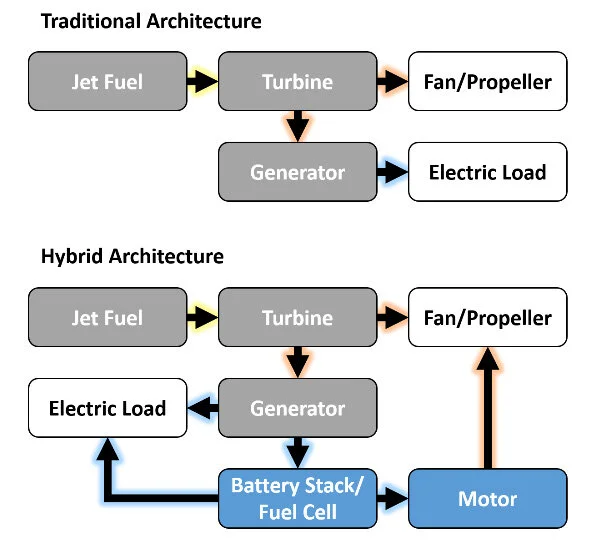Novel Propulsion Architectures:
Novel Energy Management Strategies to Broaden VTOL UAV Operational Capabilities
Alex Kunycky, Duc Ngoc Pham
Advisor: Dr. C.S. Tan
Gas turbines have dominated aircraft power for decades, due to their high power output, efficiency, and compatibility with airborne platforms. Turbines alone are best suited for aircraft missions with one main demanded power level where thrust constitutes the vast majority of power output. Modern applications are introducing an ever-more diverse demand for aircraft power, with higher electrical loads, smaller advanced aircraft designs, and unconventional mission requirements. Recent research in this area has determined that physical modularity in the power system architecture, when combined with modern power management, has the potential to significantly enhance aircraft capability and efficiency over a range of mission types
This research seeks to expand on the foundational assessments of modular hybrid aircraft propulsion systems conducted at the MIT Gas Turbine Laboratory. Particular areas of focus include optimized mission modeling, mission-based power system architecture design, robust VTOL UAV maneuverability enabled by modular hybrid propulsion systems (including vertical-to-horizontal transitions and vice-versa), and incorporation of additional power technologies such as fuel cells. These variations all feed into the development of a robust aircraft power management system, with provisions for decision making in response to changing conditions and data-driven refinement over the life of the system. More broadly, this research also aims to further the investigation of novel aircraft power systems in the context of a changing global energy landscape.

